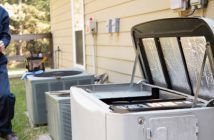https://pixabay.com/photos/hammer-books-law-court-lawyer-719066/
In October of 2017, approximately 250 wildfires swept through Northern California in the North Bay wildfires. Then, in November of 2018, 85 people and 14,000 homes were lost to another set of wildfires known as Camp Fire.
There is mounting evidence that these fires could have been prevented if the utility company Pacific Gas & Electric, PG & E, had done its duty and maintained its equipment better.
Negligence is one of the causes of actions in lawsuits against the company, but how is negligence proven?
The Elements of Negligence
Whether it is against a company or a person, negligence can be difficult to prove in a court of law. The legal definition says that negligence is “the failure to take reasonable care to avoid causing injury or loss to another person.”
While that sounds simple, an attorney needs to prove these five elements of negligence in court:
- Duty
- Breach of Duty
- Cause in Fact
- Proximate Cause
- Damages
Duty
The first element to prove is whether the defendant had a duty of care to the plaintiff. In the case of a public utility, they have a duty to ensure their actions do not cause injuries or losses to the public.
Usually, a judge will determine if the defendant owes a duty of care to the plaintiff before a lawsuit continues. A duty may exist if a reasonable person could find that the defendant had a duty of care to the plaintiff, or in this case, to the public.
Breach of Duty
Along with proving that a defendant had a duty of care to the plaintiff, they must also prove that there was a breach of that duty by the defendant. In the case of PG&E, along with not maintaining their equipment, they didn’t cut back the brush surrounding it, which helped fuel the fires.
Cause in Fact
Additionally, the plaintiff must show that if not for the defendant’s breach of duty, they would not have lost their home or sustained injuries.
If you live in Northern California and lost your home or other property, or were injured, read this guide about suing PG&E for those losses: https://www.pgelawsuitguide.com/.
Proximate Cause
The defendant in a case of negligence is only responsible for any harm they could foresee because of their actions. It could be difficult to prove that PG&E could have foreseen the wildfires that may have been the result of the neglect of their equipment.
If they cannot prove proximate cause, then the plaintiff may have difficulty collecting compensation for their losses due to negligence.
Damages
Finally, the plaintiff needs to show that damages took place due to negligence either in the form of injuries or loss of property. Since the wildfires were well publicized, showing that damages took place should not be difficult for a plaintiff’s attorney to do.
Plaintiffs may be able to collect compensatory and punitive damages if they can prove a case of negligence. Compensatory damages can be either economic or non-economic.
However, punitive damages may be difficult to collect as they require proving that gross negligence took place.
If you lost your home and other property in the Northern California wildfires in 2017 or 2018, then you need to seek the advice of an attorney if your homeowner’s insurance policy didn’t completely cover your damages.
It’s possible you can collect the money you need to replace your home and any other losses you suffered.




